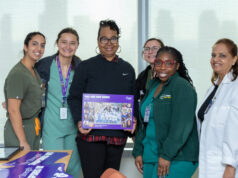At this year’s UK Kidney Association (UKKA) UK Kidney Week (UKKW) meeting (11–13 June, Edinburgh, UK), Renal Interventions spoke with Frank Dor (previously Imperial College Healthcare NHS trust, London, UK, now Erasmus MC Transplant Institute, Rotterdam, The Netherlands) about pre-emptive kidney transplantation and the benefits of moving towards a kidney care programme that features it as a focal point.
What is the benefit of moving towards a pre-emptive transplant programme?
Pre-emptive transplantation is really beneficial because you avoid dialysis and the associated complications of dialysis. Dialysis keeps people alive, but it also comes with a high cost because you have a higher chance of dying; in some cases, the odds are worse than many other types of cancer. Also, people are not quite well on dialysis; they have good days and bad days, but they have lots and lots of complications and problems and that affect quality of life. So, dialysis affects not just length of life, but also the quality of life.
If you can prevent this step with, for example, a live donor kidney transplantation, before you need to be dialysed, you skip that step, you skip the complications, and people stay much healthier. This is scientifically proven. There is less risk of dying around the transplant if you haven’t had dialysis, and there’s less risk of losing your kidney transplant if you haven’t had dialysis, so it’s quite complex, but these are the major benefits.
Can you give us some examples of successful interventions, and how they have been successful?
First of all, we need to be making sure that people get referred much earlier than we currently do, because working up for transplantation takes time and lots of investigations. Also, finding a live donor is not like asking your neighbour for a cup of sugar or something else; it takes time, and people need time to get around the idea that they need a transplant. If you pair that with all the talks about dialysis and the choices of dialysis types, they’re overwhelmed, they get depressed, and we know this, we learn this from our patients, so it’s not my idea, this is the reality, and that’s not acknowledged very well. So early talks, early education about transplantation to prevent dialysis via pre-emptive transplantation. That’s the first step.
How do you deliver that? There are examples of how this has been done successfully; from The Netherlands, there’s a home-based education system, where professionals go into the homes of the patients and they can bring their families and the patients can have some food, and it’s a really relaxed atmosphere. There, they get educated about their best options. We have to be bold. It’s not the same to just have dialysis versus a transplant versus a live donor transplant. There are things that are better for certain individuals than others, and in general, a live donor transplant is better than a deceased donor transplant, especially if you do it pre-emptively.
So home-based education, and that also addresses inequities that we have because various groups of people, not just different ethnicities or different religions, but also elderly versus younger individuals, people with different socio-economic backgrounds, and people with different health literacy levels, each have different access to the best possible treatment. This is not just for transplant, but it’s tangible here in the UK. So you can address that by giving everyone a bespoke interventional programme. The other programme that works very well—and I’ve been involved with this well here in the UK, specifically in the black community—is a community-based interventional service where people who went through the transplant or donation process act as peer bodies that can support recipients, or future recipients, of a kidney transplant in their journey. These individuals can help others in making choices, and learning about how patients could address asking the question “could you be a live donor potentially?” and speak the same cultural language, coming from the same ethnic background and cultural religious background. This is really, really powerful.












